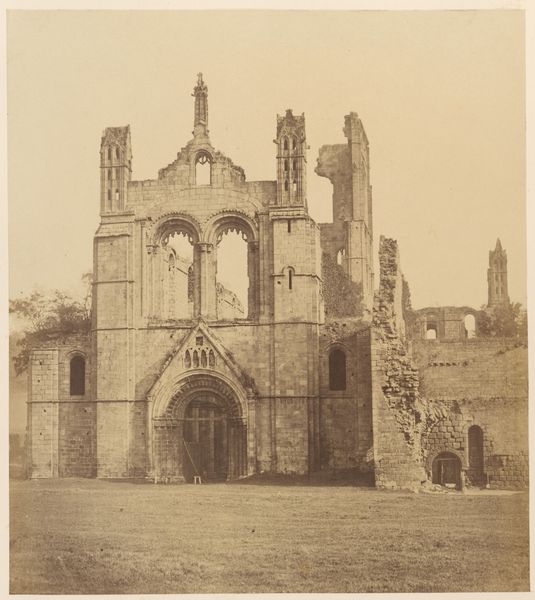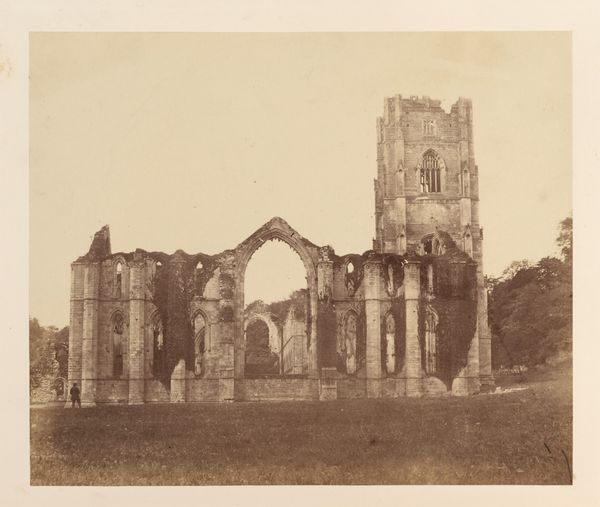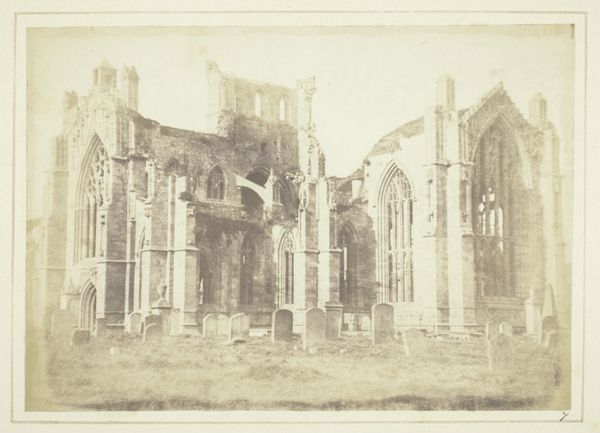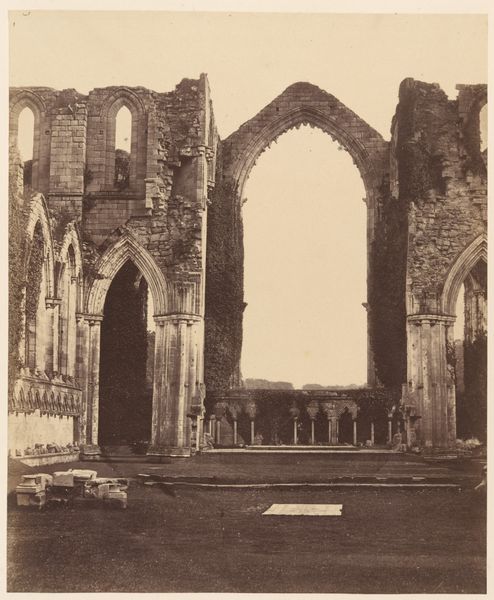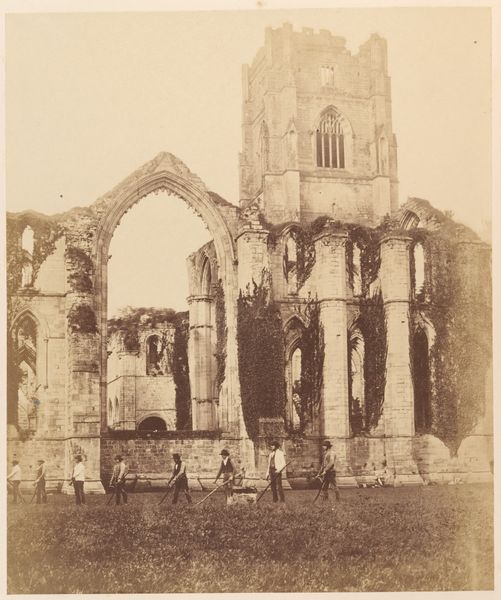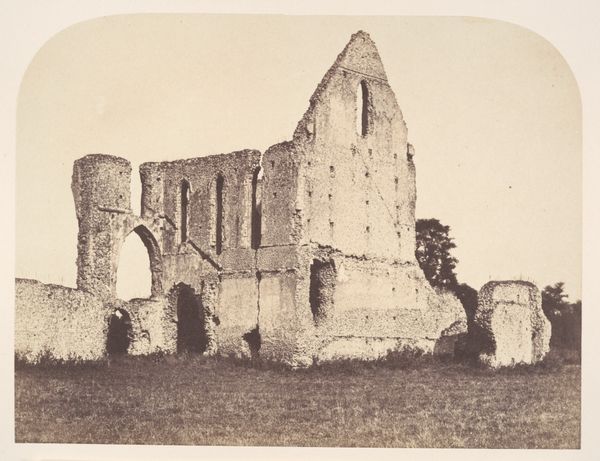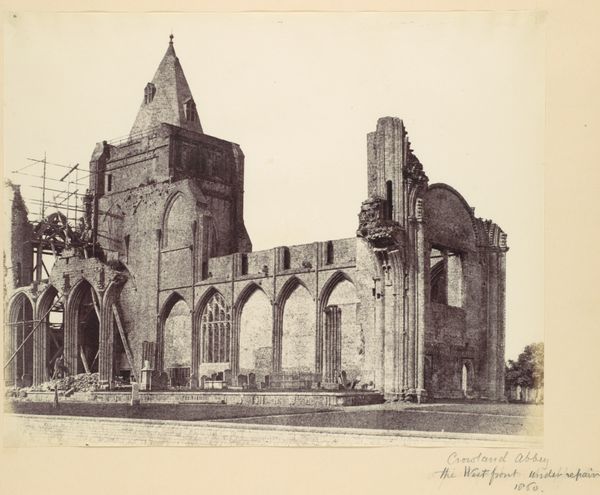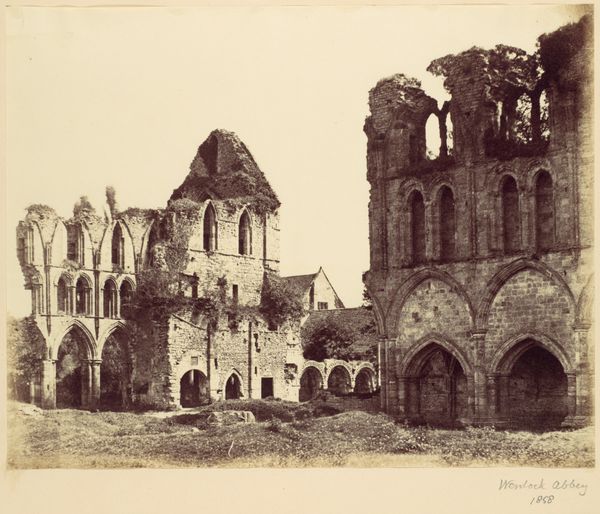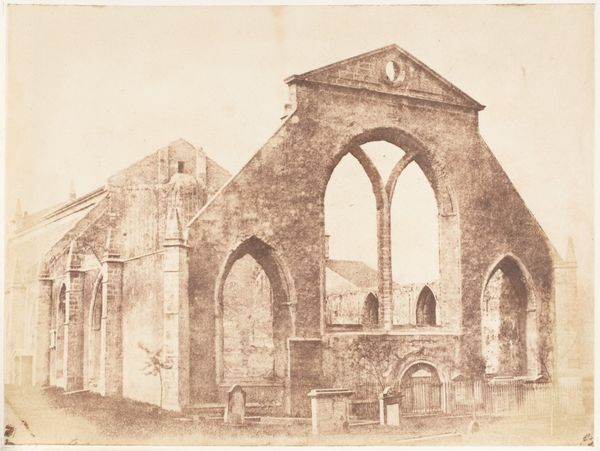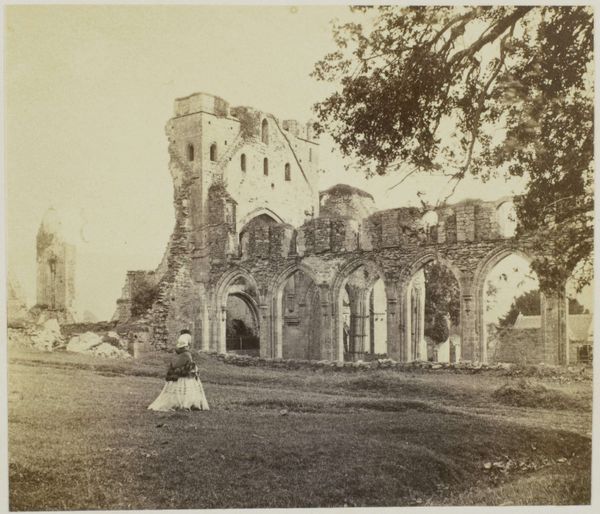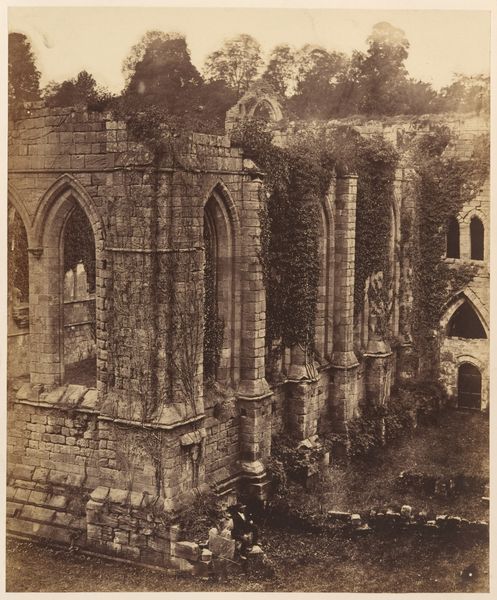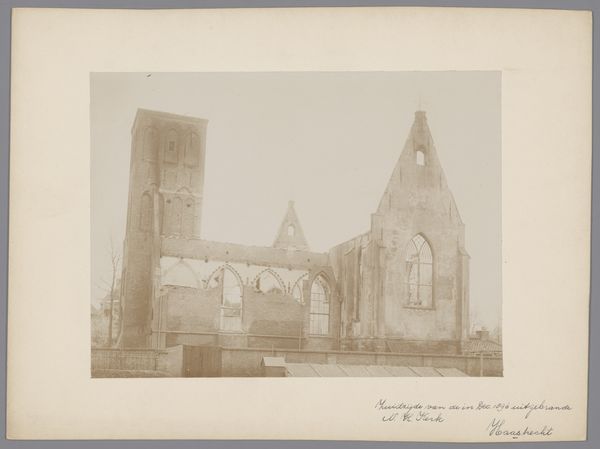
Dimensions: 21.1 x 27.0 cm. (8 5/16 x 10 5/8 in.)
Copyright: Public Domain
Editor: This is a photograph titled "Byland Abbey" by Alfred Capel Cure, taken in 1856. Looking at this image, I’m immediately struck by the ruinous state of the architecture and the melancholy atmosphere that pervades it. How do you interpret this work? Curator: It speaks volumes about time and the cyclical nature of civilization. The ruined abbey, overtaken by nature, is a potent symbol of mortality and the transience of human endeavor. Do you notice how the photographer uses light and shadow? Editor: Yes, the light seems to emphasize the broken edges and the spaces where walls used to be, almost as if revealing what has been lost. Curator: Exactly. Light can reveal absence. Also, consider the cultural memory embedded in ruins. Abbeys held spiritual significance. Their decay speaks to shifts in faith, power, and societal values. What feelings does that imagery evoke? Editor: A sense of loss, definitely. A lost connection to history and a different way of life. Also maybe a slight sense of longing for something more… spiritual. Curator: Precisely. And the encroaching vegetation hints at nature's reclamation of what was once a sacred space. It becomes a stage where nature and human history collide. How might later generations perceive such symbols? Editor: I hadn't thought about that. I imagine they might see it as a romantic symbol of the past, perhaps detached from the specific religious context. A picturesque ruin instead of a fallen holy site. Curator: Well observed. The enduring power of images lies in their capacity to evolve in meaning across time, continually reshaped by cultural context. Editor: It’s fascinating how a single photograph can hold so many layers of meaning and historical context. I'll definitely be thinking about the power of symbols a lot more!
Comments
No comments
Be the first to comment and join the conversation on the ultimate creative platform.
